Castle of jealousy and deceit
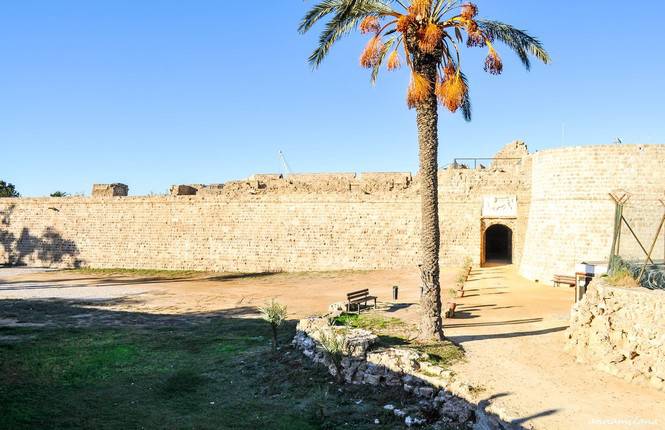
Since the “castle of Othello” is included in the fortification system of the entire city of Famagusta, it is not very striking. The wall separating the city from the port seems to be much more significant, especially when you climb it up the stairs without the railing. For some reason, the fences on it for the safety of tourists have not been done, and it is completely difficult for the two streams of people to disperse on it. But the “castle” itself (in fact, this is a fort) can be recognized from this marble slab above the entrance.
This Othello Castle (Othello Tower) is a fortification in the city of Famagusta in northern Cyprus, which today belongs to the Turkish Republic of Northern Cyprus. Here is the real story as nowhere intertwined with the fictional history, however, the castle itself was both standing and standing and you can visit it, stand on the tower and ... as far as possible imagine those tragic events that occurred within its walls.
An ancient map of the fortifications of Famagusta. The fort is marked with a flag.
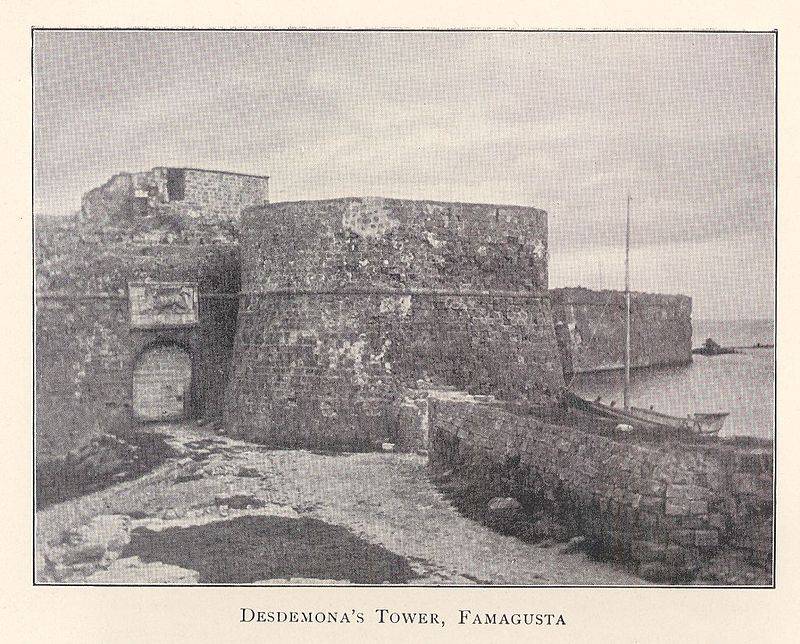
And this is how “Desdemona Tower” (then it was called like this) looked on a tourist postcard in 1900 of the year. Then these cards were also issued and were very popular among the British, who came to relax in Cyprus.
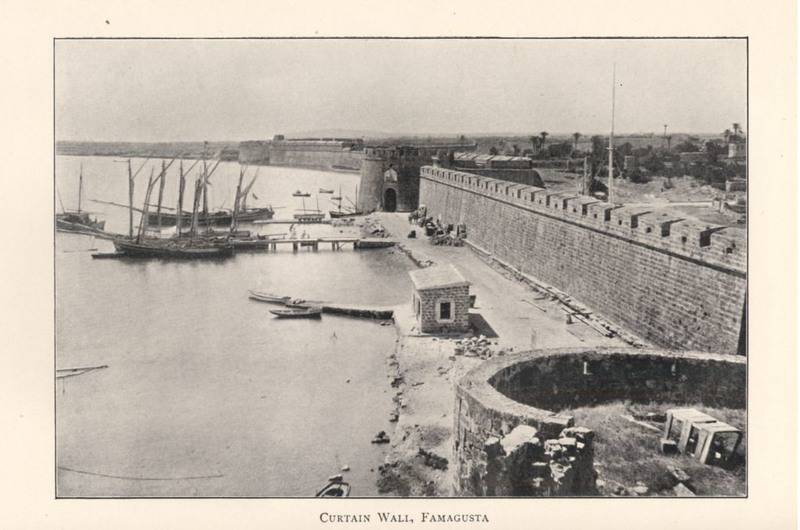
View from the tower of the fort on the city wall in 1900. Judging by the number of teeth on the wall, there could be just a lot of guns there.
But before we talk about the castle, it makes sense to recall the great William Shakespeare, and his ageless creations. It must be said that he borrowed plots for them literally from everywhere: he took them from ancient sagas and chronicles, from other people's stories and simple sailor's stories. But the genius of Shakespeare was such that all this he found a new incarnation and sound. Here is a story about the Moor Othello "from the same opera." Muslims of Spain and parts of North Africa — Berbers and Arabs who lived there after the end of the Arab conquests — were called moors in medieval Western Europe. The moors were deservedly considered brave sailors and warriors. There is a legend that at the beginning of the 16th century there lived an Italian named Maurizio Othello, who commanded Venetian troops in Cyprus from 1505 to 1508 a year. And he, under extremely suspicious circumstances, lost his wife there. According to another version, it was the governor of Cyprus at all, Lieutenant Christopher Moro, who ruled the island in the same years, that is, 65 years before the island was conquered by the Turks. That is, the basis of the creation of Shakespeare is a very specific historical fact, around which he had already composed everything he wanted. And although how it all happened in fact, no one knows for sure, the Cypriots are very proud that young Desdemona was strangled on their island, and the Othello castle in Famagusta is shown on a mandatory basis to all tourists arriving there.
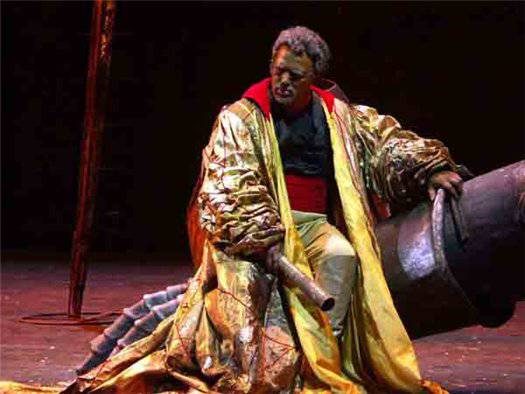
Here it is - a theater moor: "Did you pray to Desdemona before bedtime ?!"
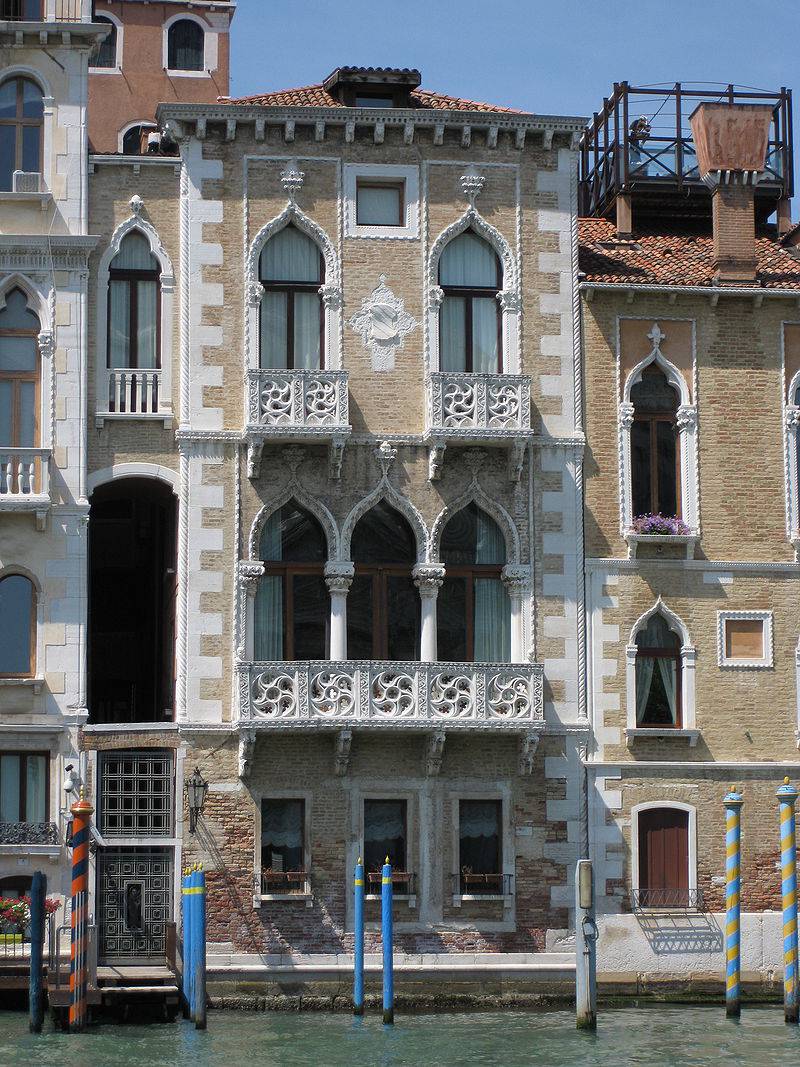
House Desdemona in Venice. From here, she, poor thing, went to Cyprus with her husband, the Moor. By the way, the idea of this Shakespeare's drama is relevant to this day - it is hardly worth it, for example, for our girls to trust their fate to people with a different mentality and temperament.
As for the plot of the drama, it is “truly Shakespearean” in abundance of cunning and secrets, which, however, is not surprising at the time of “cloak and dagger”. The famous commander Moor Othello is crowned with his daughter Brabantio Desdemona, who fell in love with him “for torment”, while he fell in love with her “for compassion for them.” But his assistant Iago and the young nobleman Rodrigo, who is also in love with Desdemona, are plotting against him. To do this, they want to slander Desdemona, pour into the poison of jealousy in his ears and even place his handkerchief, Othello's gift, on his confidant Cassio. Proof of betrayal is there, and distraught Othello orders Iago to kill Cassio. But the cunning Iago kills, above all, the naive Rodrigo and adjusts everything so that it comes off dry.
A beautiful lion at the entrance to the castle, what to say!
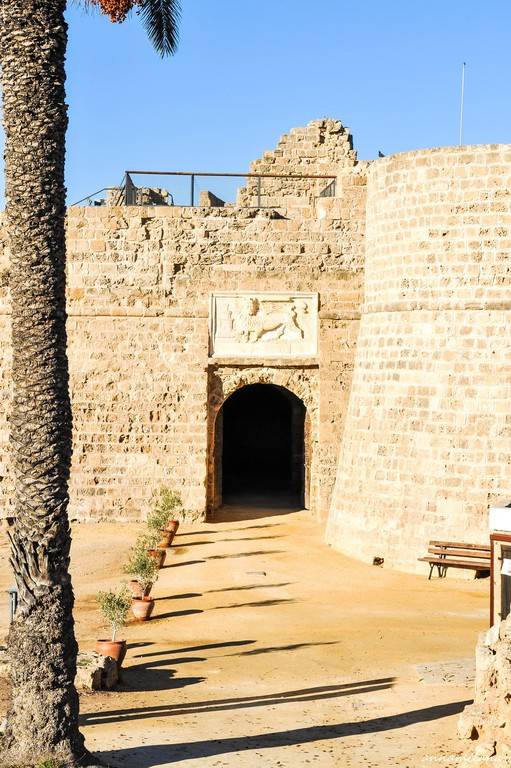
It looks like the entrance to the castle, or rather the fort. By the way, its inspection is paid. You can pay in local Turkish lira and in euros.
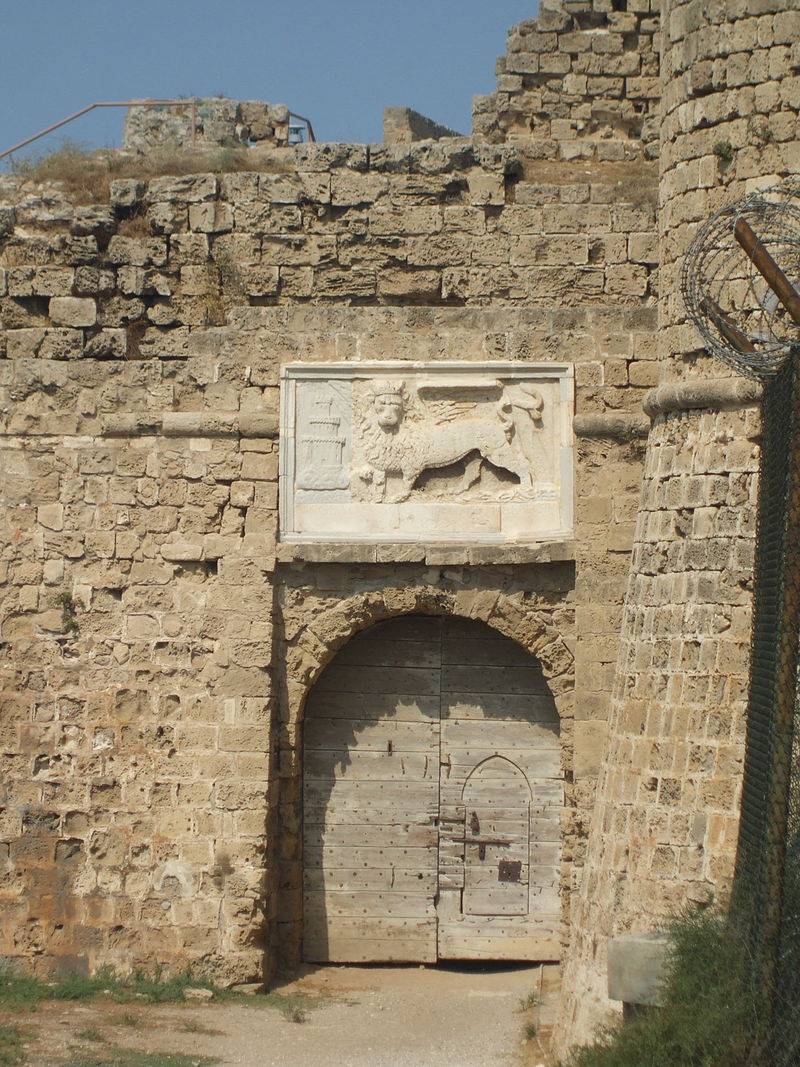
There is nothing special to photograph there, and there are very few beautiful angles. Therefore, once again remove the entrance - close-up.
Lviv, by the way, is a lot here in Famagusta. And before that, presumably, there were even more.
Well, and Othello comes to the bedroom to his wife and instead of finding out everything thoroughly, she starts to accuse her, poor thing, and does not listen to any reason and stifles Desdemona (although in some translations into Russian, for example, in Pasternak’s translation, he first strangles, and then also stabs him with a dagger, which Pasternak apparently thought was quite appropriate).
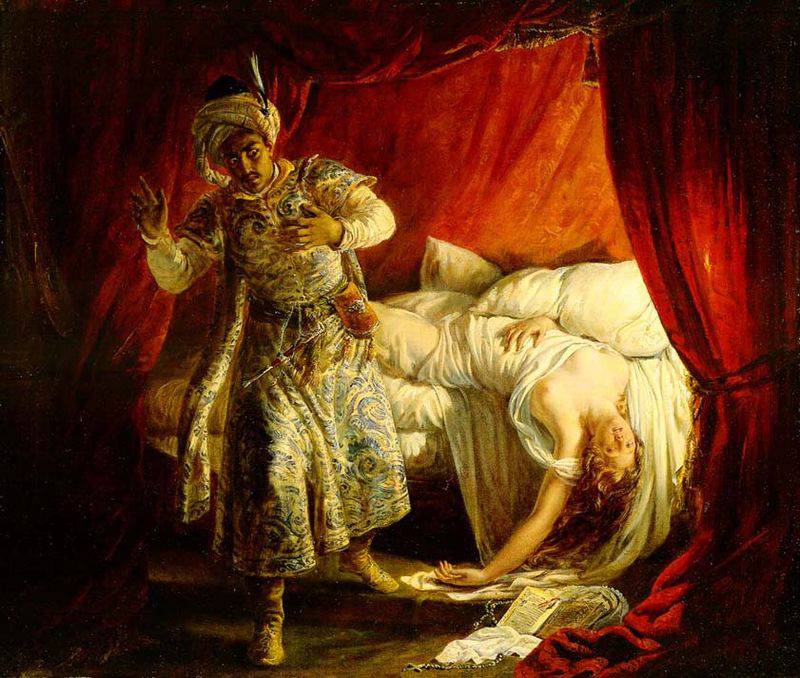
And this is how he killed her, a jealous sinister ... Picture of Alexander Colin (1798 - 1875).
But then the guards, Iago, wife Iago, Cassio, and others appear, see the dying Desdemona. And his wife Iago exposes her husband’s perfidy, for which he kills her right there. Othello slaughters himself with grief, and the guilty Iago is taken away by the guards and it must be assumed that he is also executed!
I must say that in Cyprus almost everywhere there are so many beautiful structures that you can play plays literally everywhere, but at least at this fountain ...
Literally opposite the entrance to the castle rise the medieval ruins of the Cathedral of St. George. Even what is left of it is impressive, isn't it? But before there were beautiful stained glass windows. Here, as they say, there was simply no need to attach the minaret, otherwise the Turks would certainly have attached it here! By the way, just behind it you can see the city wall and excavators, with the help of which the castle was repaired.
And so they did with the Cathedral of St. Nicholas in the center of the Old City. Therefore, it is best to shoot it from behind, where you can see all the delights of the then Gothic architecture. And palm trees. The cathedral and palm trees look very beautiful! Moreover, for some reason very few people remove it from this angle. But it is better not to look at the minaret on the right. Well, such a difference ... and nothing, is considered quite normal.
A.S. On this occasion, Pushkin wrote that the tragedy of Othello is that he is too trusting, and so it is not necessary to trust everyone. People - they are different!
As for the Othello castle itself, it is located in the northeastern (old) part of the city of Famagusta, and it closely adjoins the high fortress wall, which still surrounds the cargo port today. Tourist buses turn right here, as tourists are being taken to the Cathedral of St. Nicholas, which was turned into a mosque by the Turks, but you can also go to the castle and see it, just have to go along the fortress wall in the opposite direction.
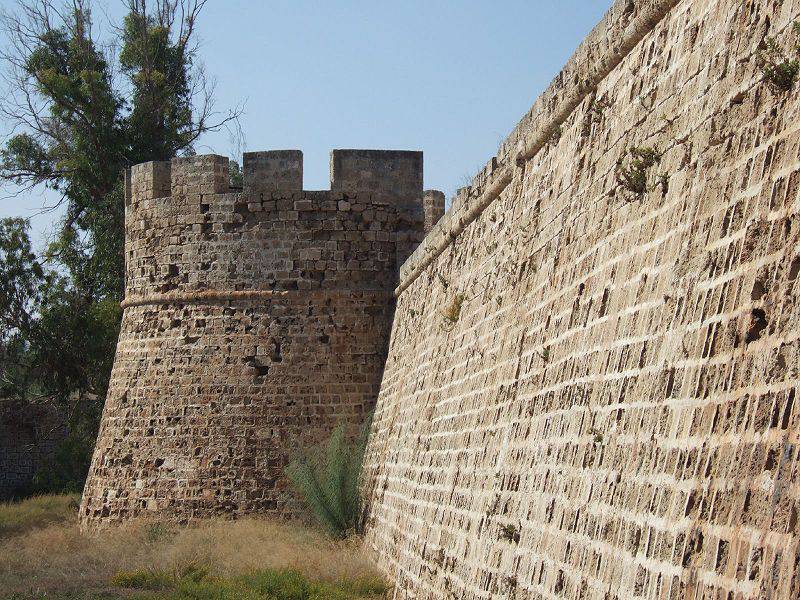
The walls and towers of the castle of Famagusta.
The basis of the castle buildings is Gothic.
Well, the history of this fortification began at the beginning of the 13th century, when the king of Cyprus, Henry I de Lusignan (1218 - 1253), to protect the entrance to the port of Famagusta, ordered to build a tower here. Already in 1310, the castle in the typically Gothic style was completely built, and then, when the island came under the control of the Republic of Venice, rebuilt in 1492 by order of the commandant Nicolo Foscari. Repair work lasted more than three years and touched all the walls that surrounded the city. At the same time, the castle itself was rebuilt virtually anew and already in the Renaissance style, and a stone slab with a bas-relief was attached above the entrance, which depicted the lion of St. Mark, the patron of Venice, with the name of N. Foscari himself and the date 1492. The castle itself consists of four towers connected by corridors in the walls, and in the towers there were loopholes for artillery shells that were to bombard the water area in front of the port. Such a plan made it possible to quickly and secretly transfer soldiers from one sector to another, without ever putting soldiers under shots. Adjacent to the castle is a courtyard adjacent to it, where ancient Turkish and Spanish bronze and iron tools are exhibited, older than 400 years, as well as stone and iron cores.
One of the guns of the time. Iron pipe, forged from rolled iron sheet. Then, in her standing position, they pulled these iron rings ... They were completely desperate people fired from her. Or ... used a long wick, because very often such guns burst. The cores were stone, because they played the role of grenades. From hitting something hard, they scattered into pieces and crippled those around them.
There are only one or two trees like this now in Cyprus. Some time ago, such sycamore locals built their ships, chopped them for coal and smelted copper. They wanted it better, but now they bring water to the tankers in a drought!
However, the castle Othello called this fort much later, already during the time of British colonial rule over Cyprus. Because how could the British pass by such an obvious possibility of perpetuating the memory of their great playwright?
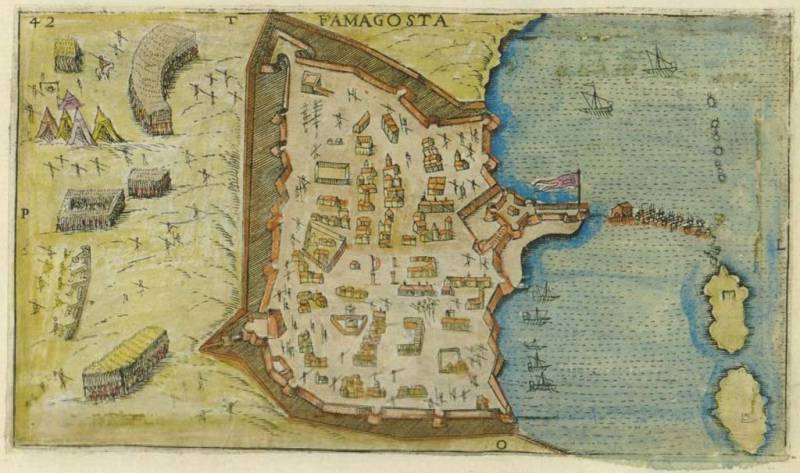
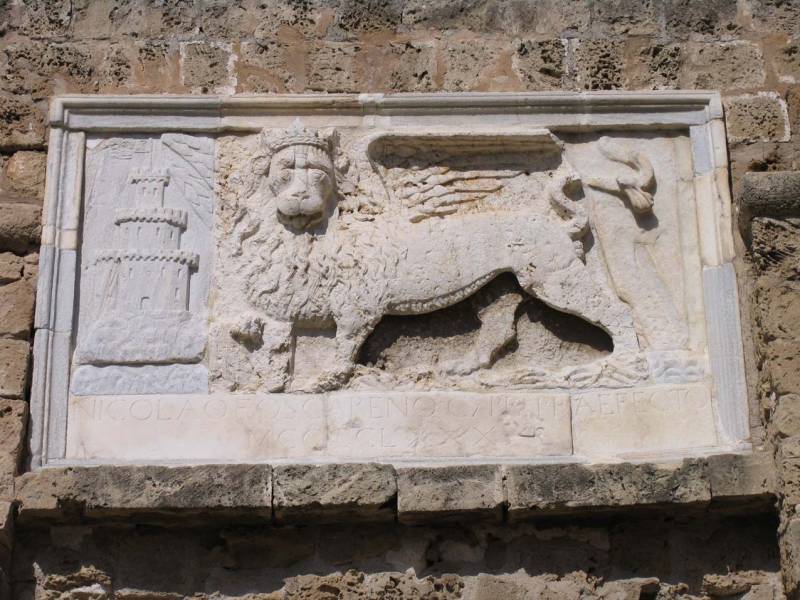
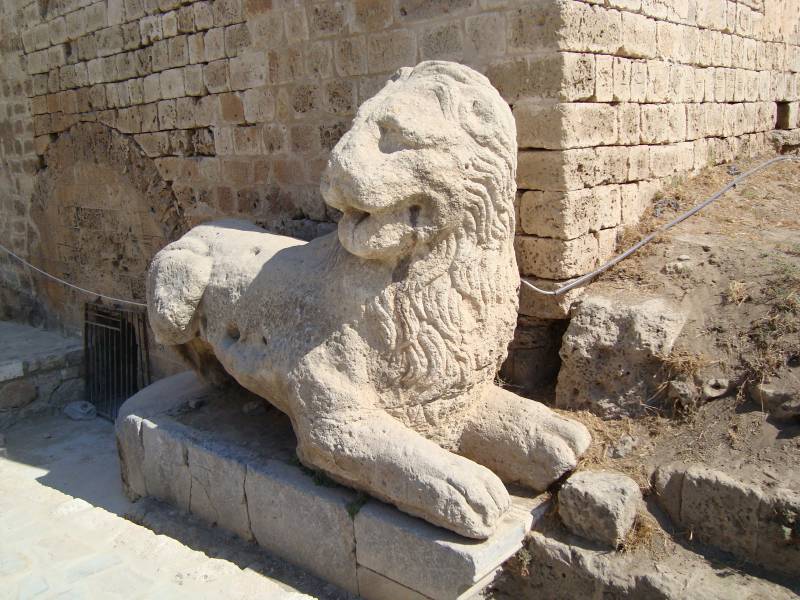
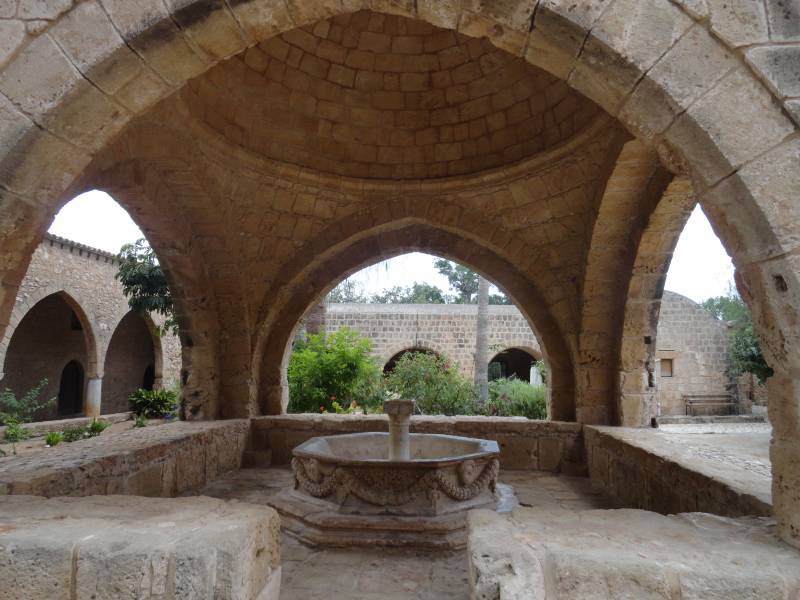
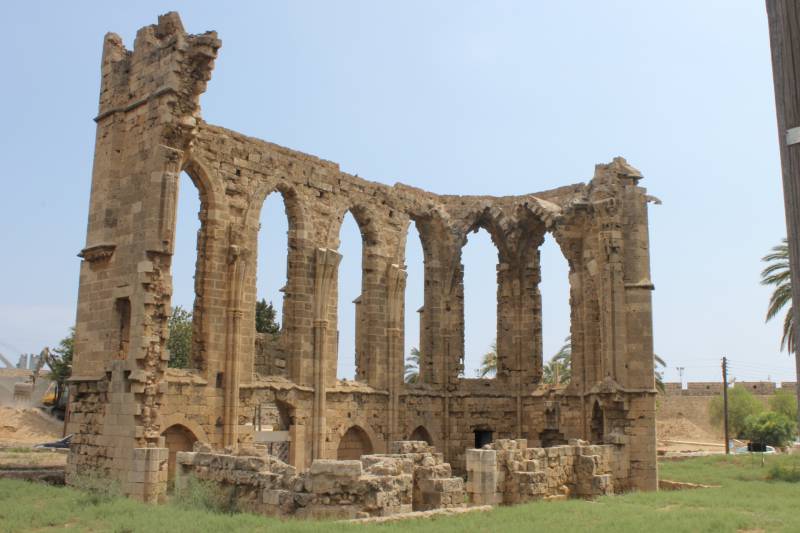
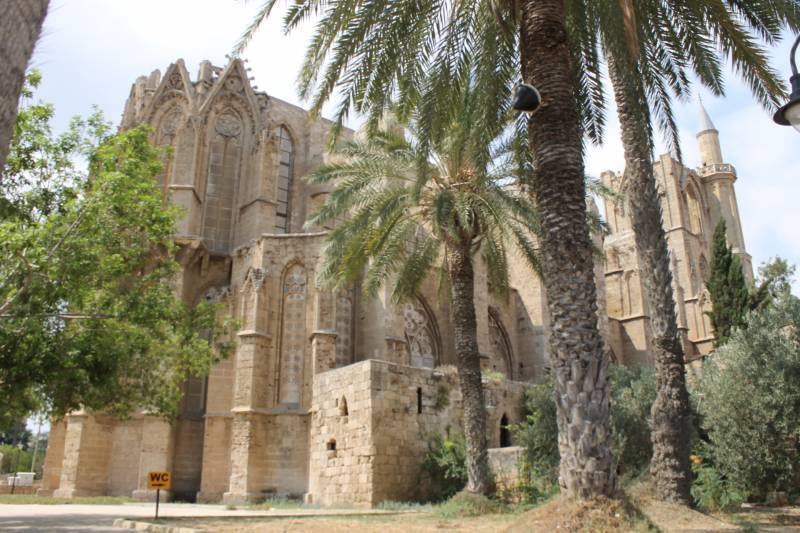
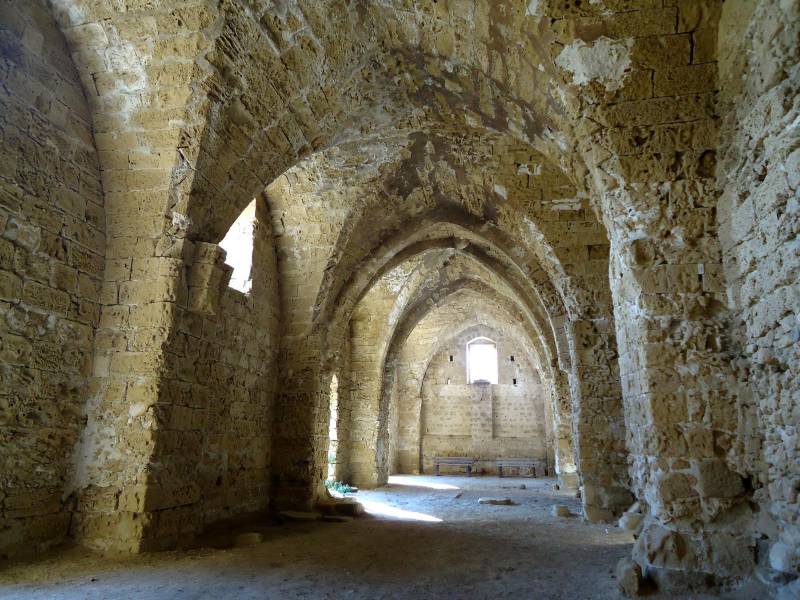
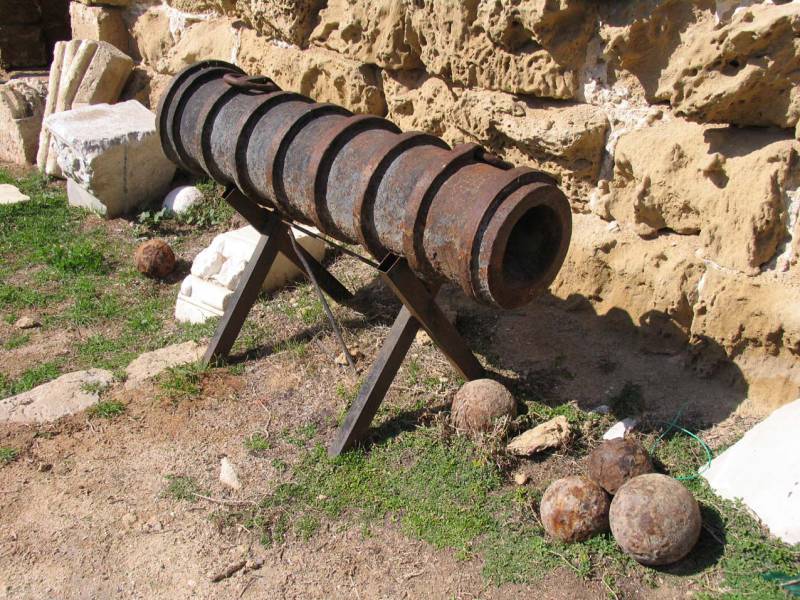
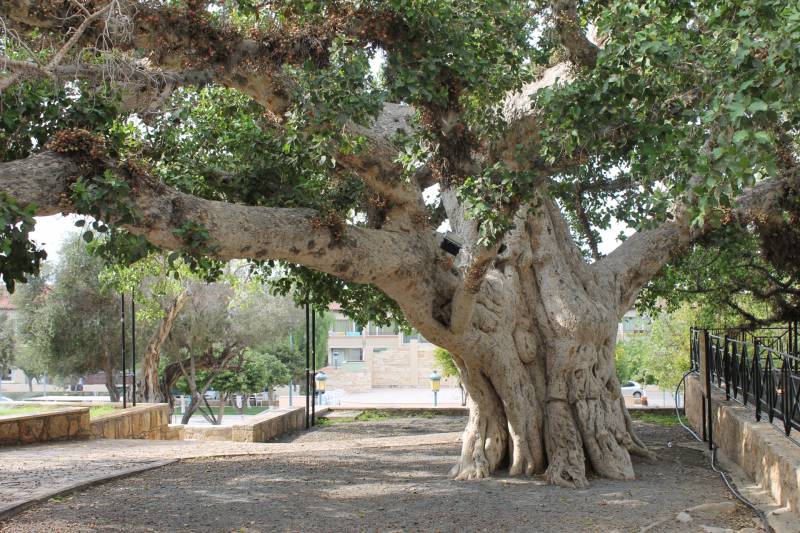
Information